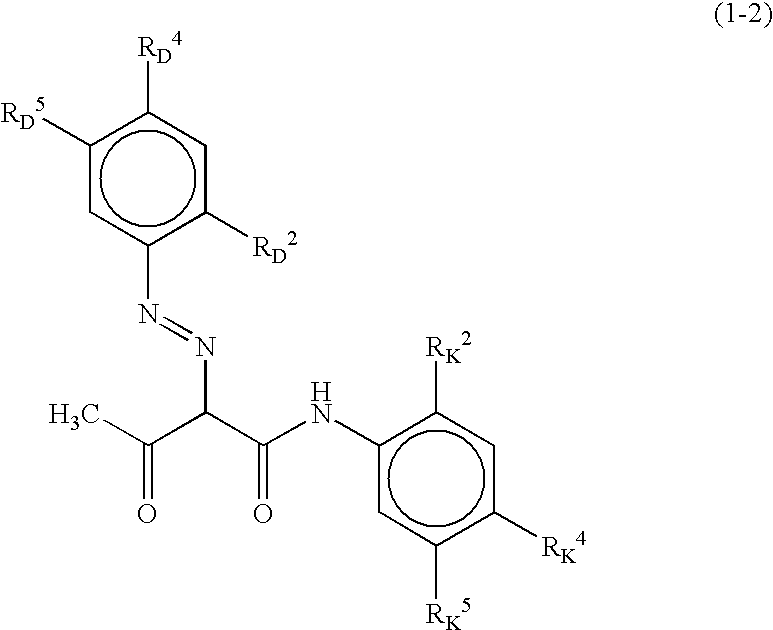Color toner, and full-color image forming method
a toner and full-color technology, applied in the field of toners, can solve the problems of excess oil, high price, high cost, etc., and achieve the effects of high coloring power, low density, and high chroma and brightness
- Summary
- Abstract
- Description
- Claims
- Application Information
AI Technical Summary
Benefits of technology
Problems solved by technology
Method used
Image
Examples
production example 2
Hybrid Resin Production Example 2
[0180]The reaction was carried out in the same manner as in Hybrid Resin Production Example 1 except that 3.8 mols of styrene, 0.07 mol of a dimer of α-methylstyrene and 0.1 mol of dicumyl peroxide were used as the materials for vinyl copolymer, to obtain a hybrid resin, Resin (2). Its molecular weight was measured by GPC to obtain the results shown in Table 1.
production example 3
Hybrid Resin Production Example 3
[0181]The reaction was carried out in the same manner as in Hybrid Resin Production Example 1 except that in place of 5.0 mols of the fumaric acid 4.0 mols of maleic acid and 3.5 mols of itaconic acid were used and in place of 0.05 mol of the dicumyl peroxide 0.1 mol of isobutyl peroxide was used, to obtain a hybrid resin, Resin (3). Its molecular weight was measured by GPC to obtain the results shown in Table 1.
production example 4
Hybrid Resin Production Example 4
[0182]The reaction was carried out in the same manner as in Hybrid Resin Production Example 1 except that in place of 3.0 mols of the terephthalic acid and 2.0 mols of the trimellitic anhydride 5.2 mols of trimellitic anhydride was used, to obtain a hybrid resin, Resin (4). Its molecular weight was measured by GPC to obtain the results shown in Table 1.
Polyester Resin Production Example 1
[0183]3.6 mols of polyoxypropylene(2.2)-2,2-bis(4-hydroxyphenyl)propane, 1.6 mols of polyoxyethylene(2.2)-2,2-bis(4-hydroxyphenyl)propane, 1.7 mols of terephthalic acid, 1.1 mols of trimellitic anhydride, 2.4 mols of fumaric acid and 0.1 g of dibutyltin oxide were put into a 4-liter four-necked flask made of glass, and a thermometer, a stirring rod, a condenser and a nitrogen feed tube were attached thereto. This was placed in a mantle heater. In an atmosphere of nitrogen, reaction was carried out at 215° C. for 5 hours to obtain a polyester resin, Resin (5). Its mol...
PUM
| Property | Measurement | Unit |
|---|---|---|
| wavelength | aaaaa | aaaaa |
| reflectance | aaaaa | aaaaa |
| wavelength | aaaaa | aaaaa |
Abstract
Description
Claims
Application Information
 Login to View More
Login to View More - R&D
- Intellectual Property
- Life Sciences
- Materials
- Tech Scout
- Unparalleled Data Quality
- Higher Quality Content
- 60% Fewer Hallucinations
Browse by: Latest US Patents, China's latest patents, Technical Efficacy Thesaurus, Application Domain, Technology Topic, Popular Technical Reports.
© 2025 PatSnap. All rights reserved.Legal|Privacy policy|Modern Slavery Act Transparency Statement|Sitemap|About US| Contact US: help@patsnap.com



